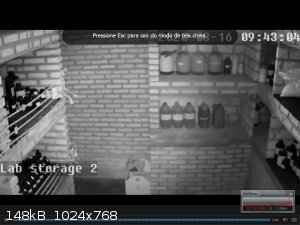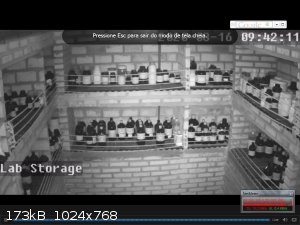beta4
Hazard to Self
 
Posts: 56
Registered: 3-2-2019
Member Is Offline
|
|
Separating flammable chemicals
I recently bought a small cabinet to store flammable chemicals separately from all my other reagents. However, I am not sure whether acids which are
also flammable (such as formic and acetic) best fit in the flammables cabinet or the general reagents cabinet among other acids.
I also thought that storing acids in the flammable cabinets may rust other items, such as a couple of butane refill cans that I also stored in there.
Would you be worried about that?
|
|
|
Prepic
Harmless

Posts: 31
Registered: 23-4-2019
Member Is Offline
|
|
I generally wouldn't consider formic acid and acetic acid to be flammable and I'd personally put them in the general reagents cabinet.
If you prefer to store them in the flammable cabinet, you can (I'd even go as far as to say should) store the bottle in a resealable sandwich bag to
ensure any corrosive vapors are contained especially for mineral acids such as conc. hydrochloric acid. I don't believe formic acid and acetic acid
will aggressively corrode other items in the surroundings but to err on the side of caution is always best  . .
|
|
|
unionised
International Hazard
    
Posts: 5109
Registered: 1-11-2003
Location: UK
Member Is Offline
Mood: No Mood
|
|
Fundamentally, two cabinets isn't enough.
It's a good idea to segregate strong oxidants too.
Formic acid and nitric acid don't play nicely together.
|
|
|
beta4
Hazard to Self
 
Posts: 56
Registered: 3-2-2019
Member Is Offline
|
|
Thanks for the replies.
@Prepic hydrochloric acid is stored among other acids in the general reagents cabinet, I never considered storing it among flammables. My doubt was
mostly about formic acid, which is probably safer stored away from sulfuric acid, even if it may raise a rusting concern.
@unionised my general reagent cabinet has multiple shelves to separate chemicals.
At the bottom I store bulk liquids. There I keep a plastic box that separates acids (hydrochloric, sulfuric, phosphoric) from other liquid reagents
and also serves to contain unlikely spills. Middle shelf is bulk solids (inorganic and organic, nonflammable), while top is bases and other
nonflammable reagents in small quantities (<=100g / 100ml).
Now that the topic is open, I'd be curious to hear how other people separate their chemicals too.
|
|
|
Chemi Pharma
Hazard to Others
  
Posts: 349
Registered: 5-5-2016
Location: Latin America
Member Is Offline
Mood: Quarantined
|
|
Quote: Originally posted by beta4  | | Now that the topic is open, I'd be curious to hear how other people separate their chemicals too. |
I separate mine like the pictures atached. In Cabinets, with two hoods working 24/24, closed room with a sprinkler. The low BP chemicals are stored
apart at a refrigerator.
Cabinet I - Dangerous chemicals that the bottles are inside another plastic bottle. Eg. Thionyl chloride, methyl sulfate, potassium tert butoxide,
sodium alkoxides, lithium, aluminum and sodium hydrides.
Cabinet II - Pharmaceutical chemical drugs imported from US, India and China.
Cabinet III - Chemicals inside 5 kg bags
Cabinet IV - Transition metals and transition metal salts
Cabinet V - reduction agents
Cabinet VI - Oxidant agents
Cabinet IX - Several other organic chemicals
Cabinet X - Alkaly and Earth Alkaly metals and metal salts
Cabinet XI - Mercury and it's salts, PTC's, aminoacids. indole and derivatives
Cabinet X - Chemicals inside 5 lts bottles
Cabinet XI - PH indicators
Cabinet XII - Organic Acids
Cabinet XIII - Inorganic acids
Cabinet XIV - Amines, ammonium salts and nitrogenous compounds
Cabinet XV - Organic Solvents
Cabinet XVI - Several other Organic chemicals
Cabinet XVII - Aldehydes, alcohols and ketones
Cabinet XVIII - Aromatic chemicals
 
|
|
|
CouchHatter
Hazard to Others
  
Posts: 151
Registered: 28-10-2017
Location: Oklahoma
Member Is Offline
Mood: 76 elements taken!
|
|
After finding this very nice pdf from Tennessee State Uni, I feel much better about my storage system. It lists lots of common chemicals, and even
clearly addresses what can be done if you don't have 10 separate cabinets lying around.
Attachment: Chemical Storage Group System.pdf (628kB)
This file has been downloaded 533 times
|
|
|
DavidJR
National Hazard
   
Posts: 908
Registered: 1-1-2018
Location: Scotland
Member Is Offline
Mood: Tired
|
|
What you should do is add a column to your inventory spreadsheet for flashpoint. Then, prioritize putting things with lower flashpoint into the
flammables cabinet. Ideally everything with a flash point of below the hottest conceivable lab ambient temperature should go in a flammables cabinet.
I don't store formic/acetic acid in my flammables cabinet, but I also don't store them in the same box as my inorganic acids.
[Edited on 17-8-2020 by DavidJR]
|
|
|
beta4
Hazard to Self
 
Posts: 56
Registered: 3-2-2019
Member Is Offline
|
|
Quote: Originally posted by CouchHatter  | After finding this very nice pdf from Tennessee State Uni, I feel much better about my storage system. It lists lots of common chemicals, and even
clearly addresses what can be done if you don't have 10 separate cabinets lying around.
|
That's an useful guide, thanks CouchHatter!
In the end I moved formic and acetic acid outside of the flammables cabinet, and I was pleased to discover that the way I stored my chemicals wasn't
too dissimilar from the quoted guide. After reading it, however, I made some further improvements.
|
|
|